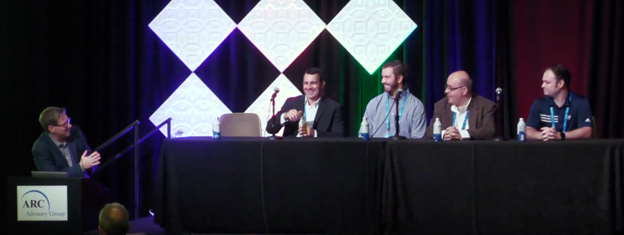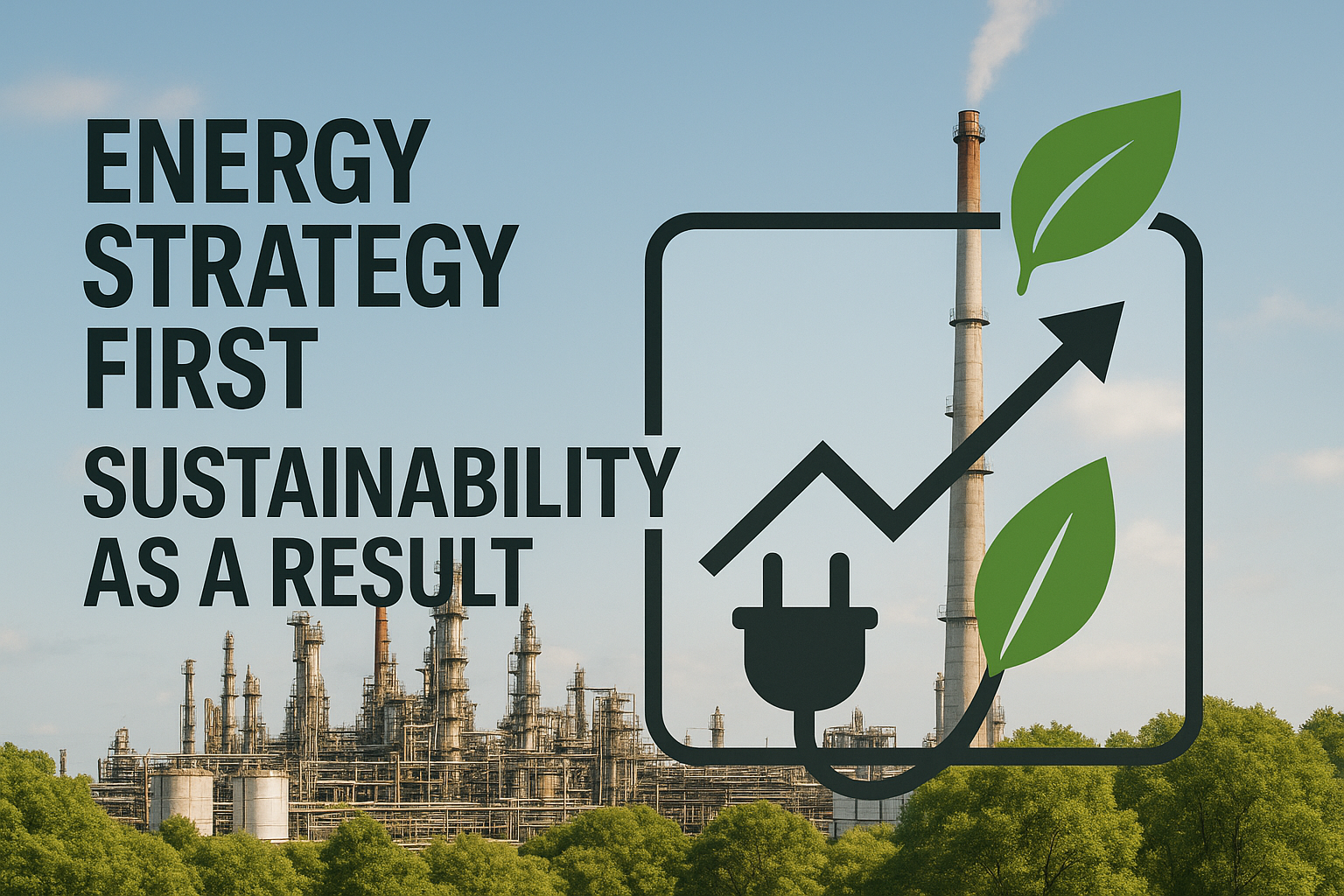Key session takeaways from the 2025 ARC Industry Forum
By Allison Buenemann, Product Marketing Manager, Imubit
It’s a toss up on which term got more air cover during the 2025 forum – ‘open’ or ‘AI’. If we go by session titles on the agenda, AI takes the cake with 16 mentions in session titles. Our take? The increasingly open industrial software landscape is paving the way for AI to add even more value in key use cases. Imubit’s role as the leading AI solution in the process optimization space was highlighted in a presentation by Marathon Petroleum Corporation followed by a lively panel session. Here are the highlights.
An AIO approach to Naphtha System Optimization
In the 2025 ARC Forum session ‘AI-Powered Digital Twins,’ GT McDaniel, Process Controls Supervisor at Marathon Petroleum, shared his experience championing AIO technology, from corporate directive to tangible results. Having Board of Directors level support to pursue projects in AI removed a lot of the inertia that is sometimes experienced when implementing a new technology project. With this support in hand, they simply needed to match the right technology with the right problem to prove it out.
The naphtha system at the Los Angeles Refinery was a good candidate for AIO because the variability with how the individual towers were controlled led to complex, nonlinear dynamics when trying to optimize the overall pool. The challenge was exacerbated by the fact that the three towers were split between two operations consoles, adding a layer of communication complexity. The nonlinear capabilities as well as the unification of optimization systems to a common platform for operator collaboration made AIO a great option.
The AI optimizer had three objectives – maximize total naphtha, minimize the bypass around the system, and meet the economic target while reducing the variability in meeting that target. When all three of these were met, there was an added carbon benefit of steam production being minimized.
Optimizing to these objectives has helped the refinery start to identify the bottlenecks in the field that prevent them from pushing harder. They’ve got a tool in place to visualize the benefits of things like valve trim replacements or reboiler cleanings that they didn’t have previously.
The experts weighed in on what it takes to make an AI project successful and sustainable.
The AI-Powered Digital Twins session closed with a panel discussion featuring AI practitioners from Marathon Petroleum and Petrobras alongside AI partners Imubit and EY. Peter Reynolds, Industry Analyst and Consultant for ARC Advisory Group, led the panel through a series of topics ranging from project justification to safety and maintainability. Here are the 5 key learnings from their discussion.
1. Ready your data.
Marathon found that variables at some point perceived as unimportant weren’t being historized and so were unavailable for AIO modeling. While not always true, in modern times, data storage is cheap, and as long as it’s not causing an impact to the process operations we need to be historizing it for use in future cases. Petrobras discussed the role of governance, and employee accountability for data quality. Imubit Solution Manager John Milaszewski reassured that just because the data quality may not be there today, it doesn’t preclude you from a successful AI project. “A lot of what the implementation team at Imubit does in tandem with customers is defining the problem in the context of the information that’s currently available and building the reward or objective function from there.”
For more on Imubit’s recommendations on this topic, check out our dedicated blog on ensuring your data is ready for AI.
2. Ready your people.
Imubit acknowledged that at many customer sites, the low hanging fruit has already been picked, and the remaining problems are more complex. This complexity necessitates more powerful technologies to solve those problems, and people to champion the technologies. Marathon agreed that powerful solutions demand strong organizational setups to enable them to extract as much value as possible. For them, having both board and management support and strong technology champions have been instrumental to success. Petrobras’ ease at identifying champions has been a pleasant surprise for their corporate team. They’re seeing people eager to engage in AI projects, seeing new opportunities for their career and personal growth.
EY added that when you’re working in innovation, sometimes you cannot prove the ROI, because you’re doing something nobody in the industry has done before. But management’s trust in the credibility of their technology champions can drive AI projects forwards.
3. Make it safe.
People think about AI and they think skynet, and no way would we ever let that take control of our plant. A requirement for Marathon in their AIO implementation was the fact that the onsite model, the one connected to their control layers, was not learning online. John explained that Imubit is very intentional about this. “It’s all learned offline. Then the model is presented to the customer, we agree on what it’s learned, what it’s going to do, alright it’s locked in.”
4. Make it trustworthy.
AI in any form can feel like a black box, so it’s important to find ways to decode what a model will do through interaction, visualization, and training. At Imubit, engineers on the solution team work with customers to demonstrate that even if the math is complex and you can’t write out the model equation, this is how you can see the model behave in a variety of situations. For Marathon, it was also important to show that once the AIO controller is online, it only operates within the boundaries that it’s been given. If it starts to deviate, it just turns off or it holds at that upper or lower limit.
5. Make it sustainable.
Both Marathon and Petrobras agreed that a large part of making a technology project successful is choosing a good partner. You need the support from your organization– technologists, leaders, managers– and you also need your technology partners to be invested in your success.
For GT as Process Controls Supervisor, his role is championing technology that gets the engineers on his team excited and wanting to engage in building the next model. Working with technology that is delightful to use, that pulls them in, and is supported by a partner that’s proactively monitoring the system, who is responsive and helps to drive sustainable technology adoption, has been critical to his success.
Give your operators a ‘Golden Batch Day’
One of the common themes across many of the presentations at ARC Forum was human operators in the loop. People will continue to play a huge role in making technology deployments successful, and no role is more important to adoption than the role that can turn the technology off.
Imubit’s John Milaszewski recalled his time working with Chevron Phillips Chemical and described his operator’s golden batch day as one where they came into a unit on-spec and lined out and kept things that way for the next 12 hours until they handed off a lined out, on-spec unit to their relief. Technology that can push a unit to its economic optimum without disrupting that golden batch day is technology that will remain on and generate value. Applying this guiding principle on top of the 5 strategies listed above will get you well on the way to a successful AI project implementation.
Stay up to date with the latest in AIO advancements at imubit.com/aio.




